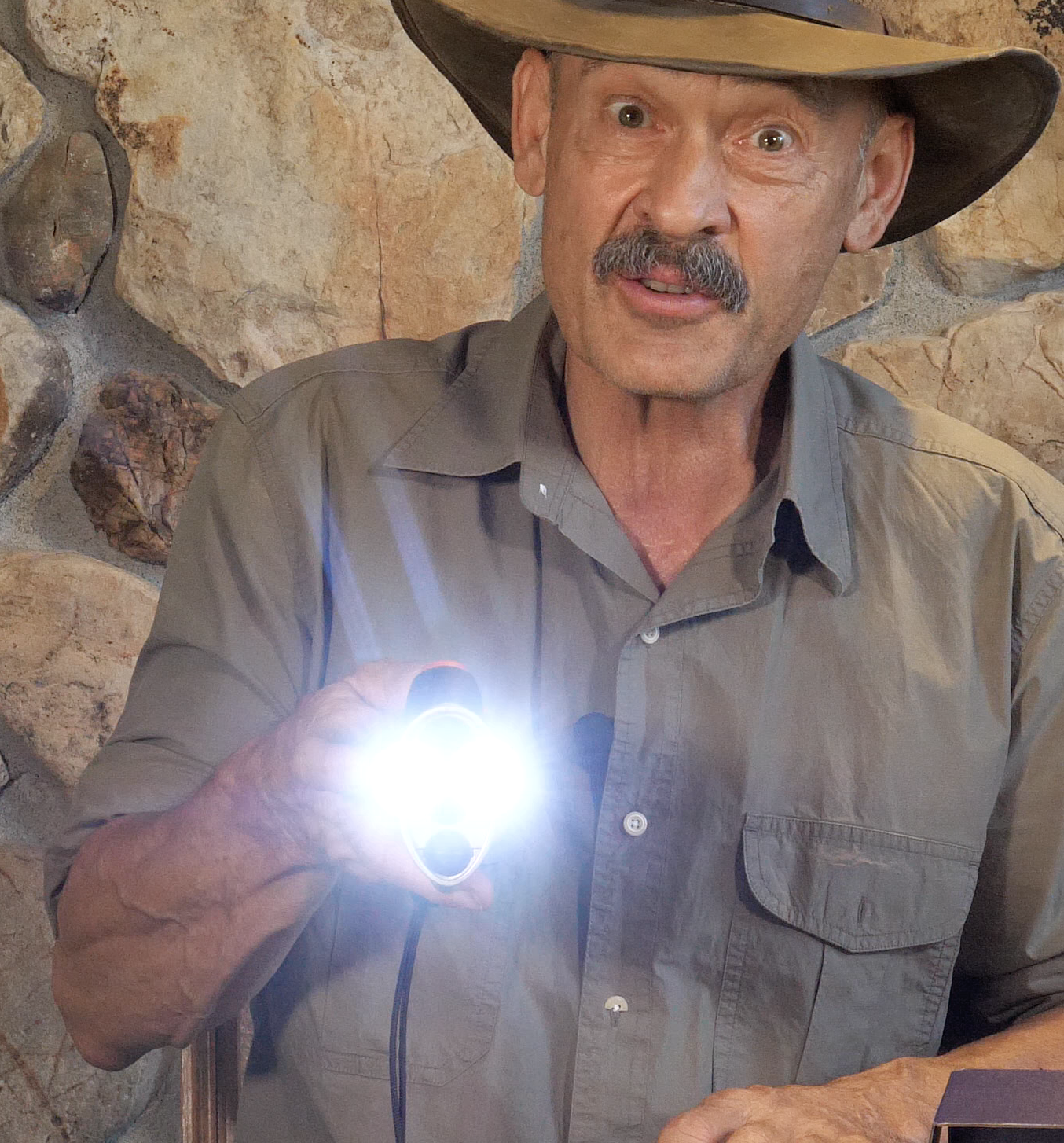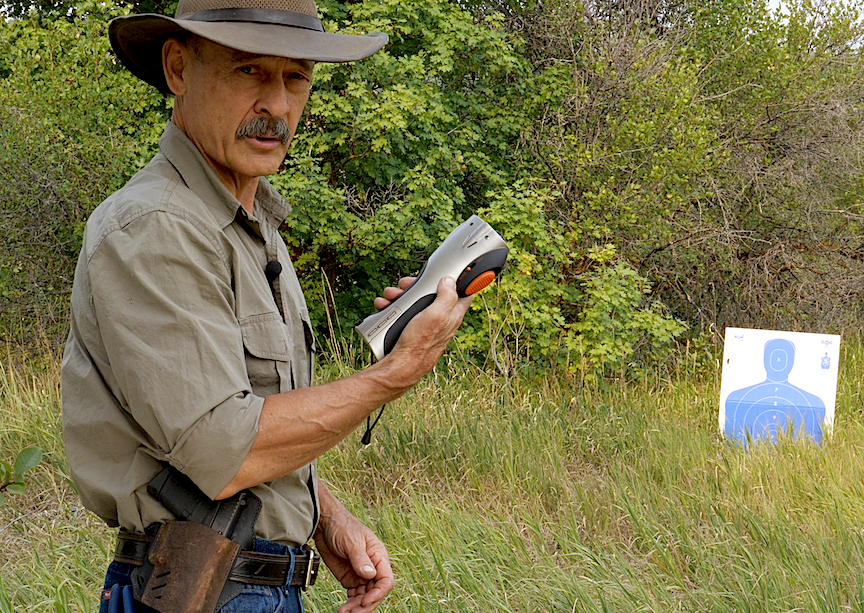PepperBall Mobile & TCP Self-Defense Launchers
That old Chinese curse — May you live in interesting times — applies today. Add dangerous to the list. Also add “governmental entities pulling back on citizen protection” plus “infringing on basic human rights to self defense” and you have the perfect excuse for a Pepperball PAVA (capsaicin powder) launcher.
Non-lethal self defense. (If they haven’t made that illegal in your community, too.)
In lieu of a firearm with real bullets, pepperball launchers are air-powered devices that throw frangible plastic balls filled with highly irritating PAVA, a powdered form of several hot peppers. This capsaicin burns eyes and nose, making it difficult to see and breathe for 15 to 35 minutes. Police use them in many jurisdictions. Perhaps you should, too.
PepperBall sells several devices that throw these 68-caliber plastic balls filled with PAVA. Two I reviewed look to be effective for nocturnal and diurnal use. Let’s check them out…
PepperBall LifeLite Mobile
The mobil is a 350 Lumen LED flashlight with a laser pointer to direct the aim of the three pepper balls stored in its magazine. An 8-gram CO2 cartridge fits in a chamber above the launch tube to propel one ball with each press of the trigger.
The beauty of the Mobile is that it’s a real flashlight with constant beam, flashing beam, and rapidly flashing beam. Use it as such knowing that — should it illuminate danger — you can flick on the laser pointer. The red dot it projects onto a target might be sufficient to discourage some attackers. If not, press the trigger. This punctures the CO2 tube and launches a pepperball where the laser points.
PepperBall Mobile is a real, 350 lumen LED flashlight, too.
PepperBall advertises ball velocity as 300 feet per second. During my tests over a chronograph I measured velocities from about 150 fps to 422 fps. I suspect that I wasn’t pressing the trigger quickly and forcibly enough while recoding some of the slower velocities. I could hear air hissing out as I pushed down on the trigger, suggesting pressure was bleeding away from behind the ball before launch. A more decisive push resulted in the higher velocity readings.
This discovery brings up the importance of practicing and training with the Mobile. This is not a grab-and-shoot device for novices. It requires some study and practice, both to operate the flashlight, laser, and launcher smoothly and to aim it precisely. Unlike a handgun, the Mobile does not “point” naturally. I found that a comfortable hold resulted in shots flying extremely high. I had to consciously point the device much lower than I thought necessary. After six shots I began to get the feel for a hold adequate to hit a man-size target at 20 feet.
Aiming PepperBall Mobile in daylight requires training and practice
This raises the obvious question: why not aim with the laser? Because you can’t see it in daylight! This is why I define the Pepperball Mobile as a nocturnal use launcher. Once the sun had set and the light began to fade I could clearly see the red dot on medium-toned targets. In full dark, of course, it showed brilliantly. So, unless you’re prepared to train to aim without sights for daylight targeting, best reserve this unit for low-light situations which, it seems to me, is when a self-defense pepper ball launcher would be most likely needed. However…
PepperBall TCP For Daylight
Should you need a daylight launcher, the PepperBall TCP (Tactical Compact Pistol) is one to consider. This unit looks, aims, and functions much like a striker-fired pistol with a grip magazine except this magazine holds the CO2 cylinder as well as 6 pepper balls. Load it, insert magazine, puncture the cylinder, and launch a pepper ball with each pull of the trigger. Easy and impressively accurate. As the video shows, I was able, first try, to rapid fire six balls into jacket draped over a sheet of plywood satisfyingly quickly. The experience made me want to load up and fire six more!
The TCP has large, easily seen sights, a transverse safety bar in front of and above the trigger, a magazine release button in the usual position, and a brightly colored body to help differentiate this from a real firearm. Launch velocity can be can be cranked up and down with a hex wrench.
I found the TCP much easier to use than the Mobile because of its pistol shape and function. Pressing the top trigger of the Mobile is unlike the firing of any launcher or gun I’ve used before. That said, the Mobile is a versatile nocturnal launcher, the flashlight illuminating the way, the pepper balls standing ready for defense, and the laser providing a fine aiming point regardless how the unit is held.
Given costs, (I almost hate to report this, but…) ideally you would want both units. Pragmatically, however, you might decide under just what lighting conditions you’d most likely need to mount a PAVA/capsaicin defense of life, limb, or property. I see the Mobile with three CO2 canisters, 12 inert powder practice balls, and 6 live pepper balls selling for around $200. The TCP is currently advertised at $299.99.
The weak point in the TCP is the need to carry it “unarmed” long term. By this I mean with the CO2 cartridge unpunctured. Once you puncture any CO2 cartridge in a device like this, some of the compressed air will slowly leak out. After about 24 hours it’s largely gone. The Mobile punctures the canister when you press the trigger, simultaneously launching the first ball. This means you could carry it for weeks, months, maybe even years with full power ready to go in an instant. The TCP pistol, however, requires turning a Flip Knob base screw on bottom of the magazine to puncture the CO2 cartridge. This means you’d carry the device with the tube unpunctured. When trouble looms, you’d need to twist the Flip Knob sharply to puncture the tube, then aim and pull the trigger. Not as quick as it could be, but perhaps worth the extra step for the six quick shots that could follow. Six exploding pepper balls lay down a dense cloud of sauce, and if you buy and load the Heavy duty Live-X balls with 5% PAVA, you’re really laying out a cloud of potent defense. I’ve taken a sniff of this stuff and believe you me, it’s potent!
Expensive PepperBalls
As of this writing, active Live-X balls are selling for $369.99 per 90, so $4.11 per shot. But I can’t imagine anyone needing 90 active pepper balls. Tubes of 10 are going for about $4.40 per ball. They are rated viable for three years.
Inexpensive Practice Balls
Hard PVC/nylon practice balls are your inexpensive practice option. They sell for about 30 cents each and can be used again and again. They hit hard enough to raise welts and cause serious pain, even take an eye out, I’d imagine. Treat these, all pepper balls and pepper ball launchers as you would any real firearm. But with these hard balls you should be able to practice enough to perfect an effective aim even with the Mobile unit in full daylight.
Pepperball Not Legal In All Jurisdictions
It pains me to report that pepper ball launchers are not legal in some cities, counties, states, even countries. This defies logic. It’s bad enough when governments prevent citizens from defending themselves with firearms and knives, but when they remove even the right to employ non-lethal (in vast majority of cases — there have been a couple of deaths associated with police use of these devices) tools like the PepperBall Mobile and TCP… well, I can’t find words adequate to describe it. I’m reminded of that old adage: better to be judged by 12 than carried by six.








